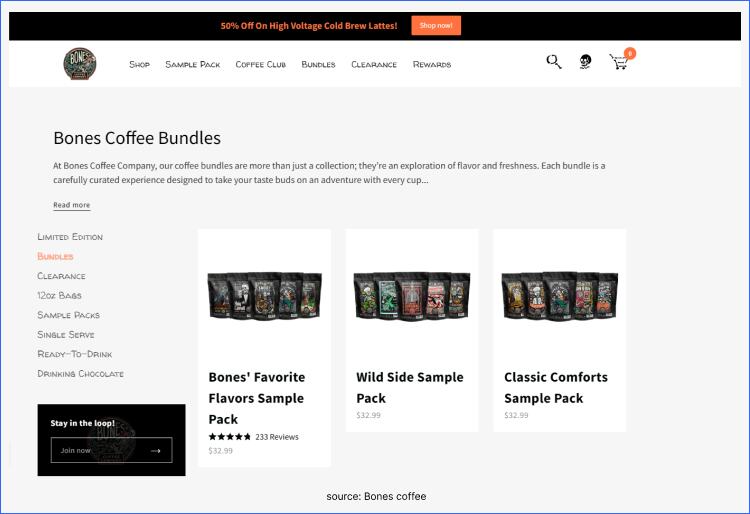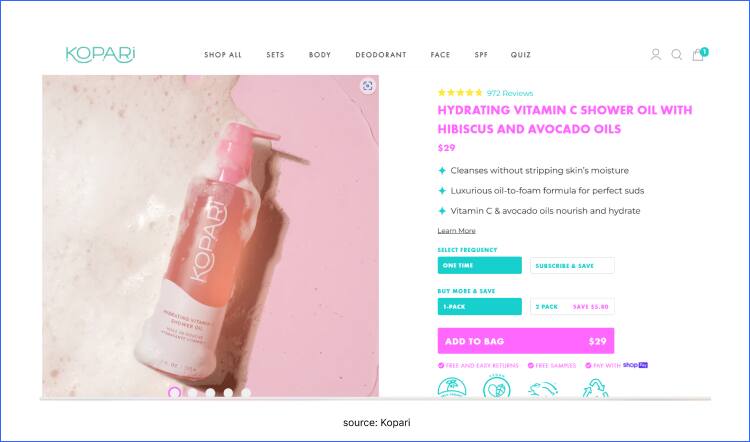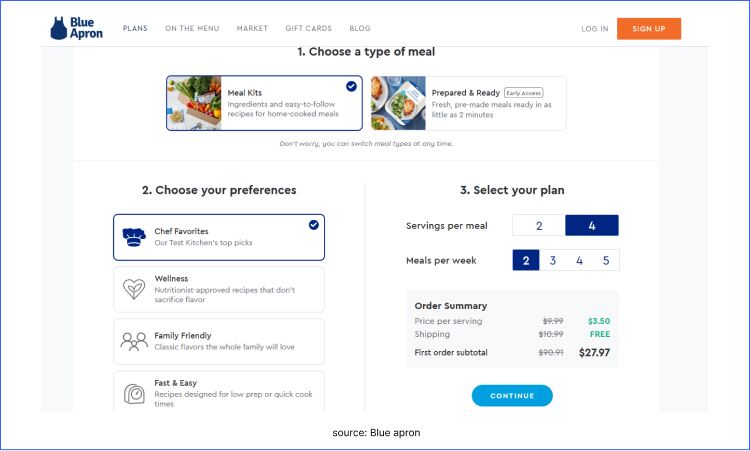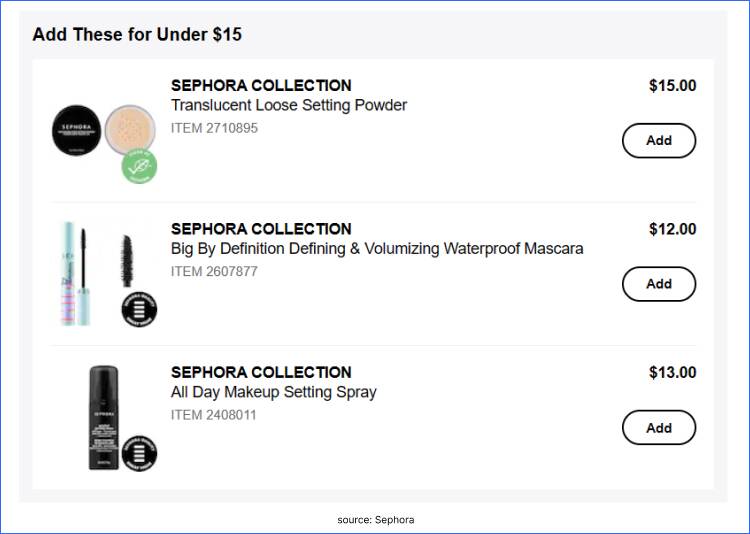Welcome to the exciting world of online shopping, where e-commerce stores are constantly battling it out to attract new customers. Picture this: your website is buzzing with visitors, and many of them are making purchases. Everything seems great, but there’s a catch – the amount customers are spending on each order is consistently on the lower side. In the fast-paced online market, imagine boosting the worth of the orders already pouring into your store. That’s why it’s crucial to explore ways to increase your Average Order Value (AOV).
AOV is a handy metric to keep an eye on as your business grows. Typically, it’s one of the first numbers that business owners look to enhance to boost revenue and optimize their return on advertising investment. The idea is simple: if you can encourage customers to spend more money per order, your overall earnings will increase, right?
Hold on a second. Like many important metrics, AOV has its limitations. In the following discussion, we’ll explore how to approach your AOV and uncover strategies for increasing it. These methods not only lead to higher revenue but also contribute to increased profitability.
What is the Average Order Value (AOV)
Average Order Value (AOV) is the cool tool that tells you how much money, on average, people splash out each time they shop on a website or in an online store. It’s like a spending report card for a specific time frame.
Picture this: If your store rakes in $3,000 from 100 orders, your Average Order Value (AOV) is $30. That means, on average, each customer shells out $30 when they hit the ‘buy’ button.
AOV isn’t just a big picture thing; you can zoom in on specific products or services, channels, or geographic regions. Companies use it to spy on customer habits, see which sales tricks work, and figure out how to make more money.
Take a peek at it over time too! Compare this year’s AOV with the last or see how different ads or sales pitches mess with the AOV. By grasping the process of calculating AOV and identifying the factors that sway it, businesses can make moves to boost their average order value and enhance their overall profits.
How to Calculate Average Order Value (AOV)
The Average Order Value (AOV) is a simple way to figure out how much, on average, customers are spending per order. You can find it by dividing the total revenue for a specific period by the total number of orders during that time.
Here’s the math behind it:
Remember, AOV is all about the revenue per order, not per customer. So, if your monthly revenue is $4,000 from 100 orders, that means each order, on average, is worth $40 that month.
But be cautious! Sometimes, a few big orders or very small ones can make the AOV look different from what you might expect. To get a more accurate picture, it’s smart to dig deeper into the data. You can check for any extreme values that might be pulling the average in one direction or another. Segmenting the data can also help you understand better what’s influencing the AOV calculation.
Now that you’ve got the basics of AOV, let’s explore it a bit more!
Increasing Average Order Value: Benefits
You might be wondering why we’ve chosen to focus on average order value in this blog.
Why is the AOV so important?
To put it simply, a higher AOV means you can generate more revenue from the same number of customers. This allows you to increase your earnings without having to ramp up your spending on marketing and sales. Optimizing AOV provides marketers with an additional strategy to fuel business growth. Now, let’s look into some of its major benefits!
-
Boost Your Earnings and Make More Profit
A rise in average order value leads to increased revenue and profit for your business. When each order contributes more to your earnings, your overall business performance improves. Observing a positive change in average order value enables you to channel additional funds into expanding your business while also boosting your earnings.
-
Optimizing Your Marketing Investment
Imagine you invest $30 in marketing, but your average order is only $60. After accounting for product costs and taxes, there’s not much left in your pocket. However, when you witness a positive shift in average order value, your marketing spend becomes more profitable. That’s why it’s so crucial.
-
Enhanced Customer Lifetime Value
Customers who exhibit a pattern of higher spending are likely to remain loyal over an extended period. Their cumulative contributions, through repeated purchases with elevated order values, result in a higher total lifetime value for your business. This increased lifetime value encompasses not only the immediate transactional gains but also factors in potential future transactions, customer referrals, and brand advocacy.
-
Move More Products
Suppose you have actual stock for a physical store or an online shop (not for drop shippers, though), using a smart average order value strategy can help you sell more items. By tweaking things to increase your AOV, you can sell a greater quantity of the products you have in stock.
How to Increase Average Order Value: 8 Strategies & Examples
So far, we’ve seen how AOV can seriously boost your profits. But here’s the burning question we haven’t tackled yet: “How do you get your customers to keep coming back and spending more or in simple terms, how to increase average order value?”
Well, that’s exactly what we’re going to explore today. There are a bunch of strategies to make this magic happen, so don’t go anywhere – keep reading to find out more!
1. Cross-Selling
Here the trick is all about popping some product suggestions onto your product page. But here’s the twist: instead of just throwing out other popular stuff from your store, go the extra mile. Pick out items that go perfectly with what’s already in the user’s cart – like accessories or add-ons. Think of a matching purse for a dress or artificial flowers for a vase. It’s all about making those extras look like a match made in shopping heaven!
Now, let’s check out an example from Amazon. I chose a flower vase and tossed it into my cart. Right away, Amazon jumped in with suggestions for related items, like pebbles and dried flowers that I could grab along with the vase. It’s a neat demonstration of cross-selling in action and one of the great ways to increase AOV.
Pro Tips:
- Recommend items that naturally complement the customer’s initial purchase. Think about what goes well together or enhances the main product’s utility.
- Showcase cross-sell suggestions prominently on the product page or during the checkout process.
- Create a sense of urgency by introducing limited-time offers on complementary products.
- Feature positive reviews or testimonials about the suggested cross-sell items to build trust and confidence in the additional purchase.
2. Package Deals or Bundling
It is the practice of offering related products or services together as a package deal. Instead of selling items individually, businesses create bundles by combining multiple products that complement each other or meet specific customer needs. The aim is to encourage customers to purchase more items at once, thus increasing the overall order value.
For example, a technology store might offer a bundle consisting of a laptop, a laptop bag, and antivirus software at a slightly discounted price compared to purchasing each item separately.
Here’s another example! Take a look at this bundled offering from Bones Coffee (you’ll find bundles conveniently located at the top of the navigation bar). They’ve cleverly combined various coffee blends with a mug, seamlessly incorporating both cross-selling and upselling elements.
Pro Tips:
- Bundle products that naturally complement each other or are frequently purchased together. Create combinations that provide additional value to the customer.
- Offer a slight discount when customers purchase the bundle compared to buying each item separately.
- Communicate the benefits of the bundle, such as cost savings, convenience, or enhanced functionality. Ensure that customers understand the value they receive by opting for the bundled package.
- Introduce bundles based on seasons, holidays, or specific themes. This adds a sense of excitement and urgency, encouraging customers to make a purchase.
- Create a sense of urgency by making some bundles available for a limited time.
3. Upselling
Ever heard of upselling? It’s when you suggest to customers a fancier version of the product they’re eyeing. Picture this: someone’s checking out a simple laptop bag, and you swoop in with an upsell, presenting a pricier option that’s top-notch, maybe made with premium materials, a limited edition, or even customizable. It’s all about giving them that extra something special!
You can also ask if the customer wants to buy 2 packs instead of one pack at a discounted price. In the case of shower gel, Kopari is suggesting that the customer buy two packs instead of just one and get the deal at a discounted price.
Pro Tips:
- Tailor your up-selling strategy to the customer’s preferences and needs.
- Communicate the additional benefits or features that come with the upgraded or higher-priced option.
- Offer a discounted rate when customers opt for a larger quantity or an upgraded version.
- Provide information about why the up-sell is beneficial. This could include demonstrating how the upgraded product delivers enhanced performance, durability, or additional features.
- Leverage customer data and purchase history to make personalized up-selling recommendations. Show them products that align with their previous choices.
4. Bulk Purchase Options
The bulk buying option is a great concept to follow for an increase in Average Order Value (AOV). It involves encouraging customers to purchase a larger quantity of a product by offering them a discounted rate. Essentially, it’s a strategy where customers can buy in bulk, receiving a better per-unit price compared to buying individual items.
Implementing a bulk buying option in your AOV strategy can appeal to customers who are looking for value and are willing to purchase larger quantities to get a better deal. It not only increases the average order value but also provides customers with an attractive incentive to buy more.
Blue Apron is a meal kit subscription service that simplifies the home-cooking experience by delivering pre-portioned ingredients and step-by-step recipes directly to customers’ doors. In the context of bulk buying, Blue Apron encourages customers to subscribe to a larger number of meals per week, offering discounts on the per-serving costs. This means that when customers choose to receive a higher quantity of meal kits in their subscription, the cost per serving decreases, providing an economic incentive for customers to opt for a more extensive and frequent culinary experience.
Pro Tips:
- Communicate the cost savings associated with bulk purchases. Use effective messaging to highlight the advantages of buying more units, emphasizing the overall value.
- Introduce limited-time offers or promotions for bulk purchases to create a sense of urgency.
- Encourage customers to subscribe to regular deliveries by offering additional discounts for committing to a specific quantity or duration.
- Include a free item or extra product when customers opt for bulk purchases.
- Clearly display the cost savings calculations for customers, showing them exactly how much they save by choosing the bulk purchase option.
5. Tiny Extras
These are low-cost items or accessories that customers can easily include in their purchases to enhance their overall shopping experience. These items are usually complementary to the main product or serve as small, convenient additions. The goal is to encourage customers to spend a little more by offering them value-added options.
For example, a customer purchasing a smartphone might be offered small add-ons like a protective phone case, screen protector, or a portable charger at checkout. For a customer purchasing a blender, small add-ons could include extra blender cups, specialized blades, or a recipe book.
Sephora is a renowned beauty and cosmetics retailer, widely recognized for its extensive range of skincare and makeup products. In the context of enhancing Average Order Value (AOV), Sephora employs a strategy where, during the process of purchasing a primary beauty product, customers are encouraged to consider small add-ons.
These additions are designed to complement the main purchase and often include options such as travel-sized versions of skincare essentials, makeup applicators, or sample-sized fragrances.
Pro Tips:
- Ensure that tiny add-ons are directly related to the main product being purchased. The more relevant they are, the more likely customers will see value in adding them to their orders.
- Feature tiny add-ons prominently during the checkout process or on product pages.
- Use informational pop-ups or tooltips to briefly explain the benefits of tiny add-ons.
- Include a free tiny add-on as a sample with the main purchase. This not only adds value for the customer but can also lead to future purchases of the featured tiny add-on.
- While promoting tiny add-ons, make it just as easy for customers to remove them from their cart. This transparency ensures that customers feel in control of their choices.
6. Offer Quick Assistance through Live Chat and Chatbot
Think of live chat as your online shopping buddy and one of the great ways to increase AOV. Instead of picturing people in an office wearing headsets, imagine friendly support folks ready to help you out. Nowadays, online stores using live chat tend to sell 10% to 15% more per shopping cart, according to Forrester. It’s like having a helpful friend right there while you shop!
Imagine this: Live chat is like having a superhero for your customers. It swoops in to answer their burning questions right away, boosting the chances of making a sale and preventing items from being left behind. Picture it as the sidekick for your most eager buyers—those who are all set to browse or buy but just need a little nudge with some answers to confidently press that Buy button.
Running an online business is like sending buyers on a bit of a quest—they need to discover and buy products without physically seeing them. Sure, product reviews and testimonials help, but when it’s crunch time, live chat steps in to seal the deal. And here’s the magic: by offering a quick way for buyers to chat with you instantly, you’re not just making a sale; you’re sparking a conversation that can lead to more repeat sales. It’s like turning customers into friends who keep coming back for more!
You’ve got plenty of live chat choices out there, but here’s a standout: REVE Chat. It’s an AI-powered omnichannel customer support software, that allows you to provide instant help on your website, mobile app, and various social media platforms. Eager to explore its unique features hands-on? Go ahead and SIGN UP today!
7. Customer Loyalty Program
A significant portion, 71% to be precise, of consumers consider loyalty programs to be an important aspect of their connections with brands.
If you haven’t tried it yet, we suggest beginning with an easy-to-manage loyalty program. It’s a win-win! Your customers will appreciate it, and in return, you’ll see a boost in spending from those who use loyalty points for purchases. When setting up a loyalty program, make sure the rewards make sense for your brand. Your points and tiers should be tempting enough for customers without hurting your profits. Keep it sweet for them and smart for you!
Claire’s, the cool accessory store for teens, just kicked off an awesome loyalty program! If you’re a Claire’s loyalty member who signed up for emails, you’re in for a treat. Buy a piercing starter kit in-store, share your email at checkout, and voilà! You get a free pair of earrings every month for a whole year. Sweet deal, right?
Pro Tips:
- Offer special perks or discounts for customers who reach different loyalty tiers.
- Create urgency by occasionally offering bonus loyalty points for a limited time.
- Provide incentives for customers to try higher-priced items or related products.
- Reward your loyal customers with exclusive access to flash sales or time-limited promotions.
- Celebrate your customers’ birthdays with special discounts or bonus points.
8. Free Shipping Eligibility
This is one of the great ways to increase AOV. Free shipping limits a strategic pricing and promotion approach used by businesses. This involves setting a minimum order value that customers need to reach to qualify for free shipping on their purchases. This threshold is established to encourage customers to spend more per order, ultimately increasing the average amount spent by each customer.
For example, Heatonist, a company specializing in hot sauces and spicy foods. maintains a constant free shipping banner visible across all screens, encouraging customers to meet the shipping minimum as they browse and shop.
Pro Tips:
- Carefully analyze customer behavior, product margins, and competitive landscape to set a free shipping threshold that encourages increased spending without discouraging purchases.
- Clearly display the free shipping threshold on your website, preferably on the homepage and during the checkout process.
- Consider implementing dynamic free shipping thresholds based on factors like customer segments, purchase history, or current promotions.
- Introduce occasional promotions where the free shipping threshold is temporarily lowered or eliminated for a specific period.
Increasing AOV for Business Success
Here are some easy and fun ways to boost AOV and grow business revenue. Try out different ideas and discover what works best for your business. Even a small increase in how much customers spend can make a big difference to your overall profits.
Whatever method you go for, remember that it’s crucial to keep things relevant. Offer add-ons, special deals, or free coupons for additional items that make sense for your customers. Highlighting desirable delivery options, like free shipping, can also be a great way to increase the average order value.
Instead of getting stuck in the hustle of acquiring customers, put your energy into making a better deal: Customers who invest more receive additional benefits and value in return.













